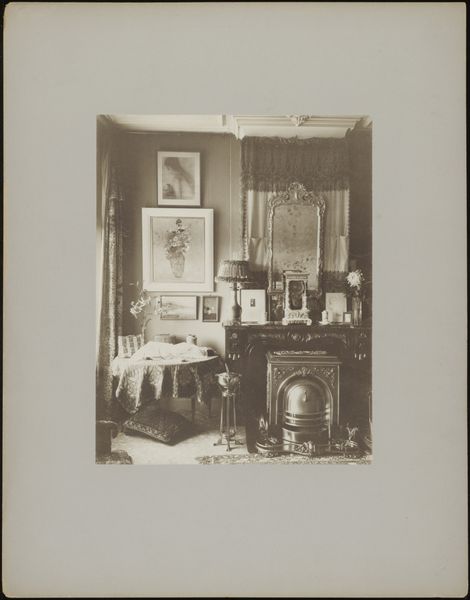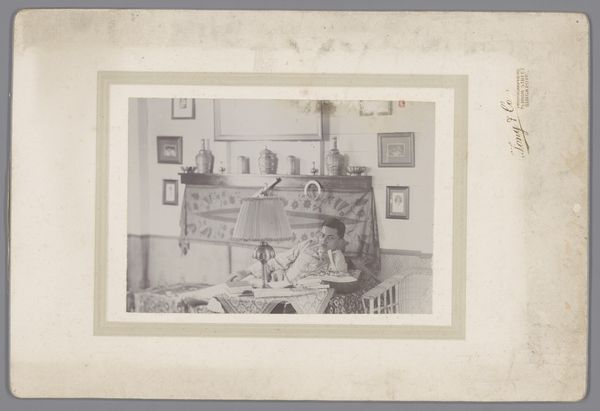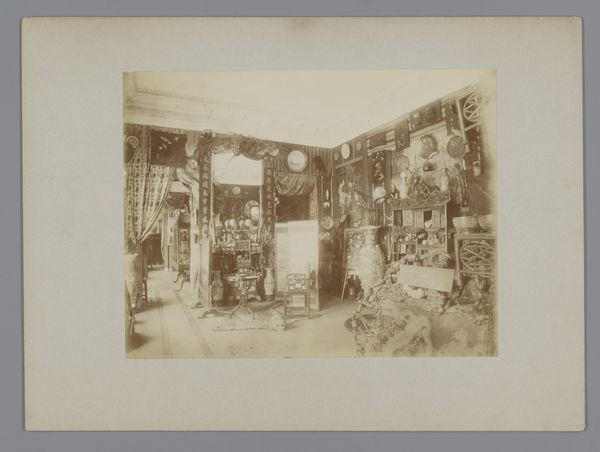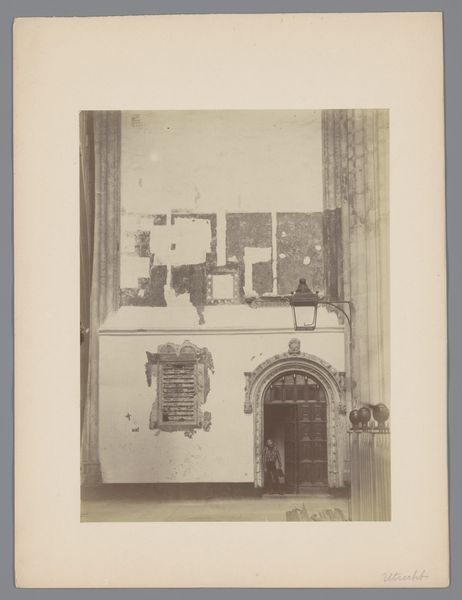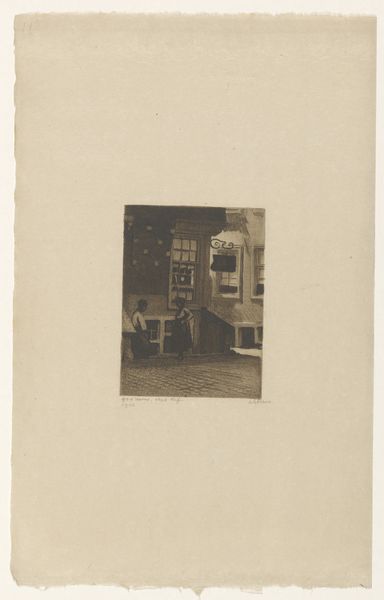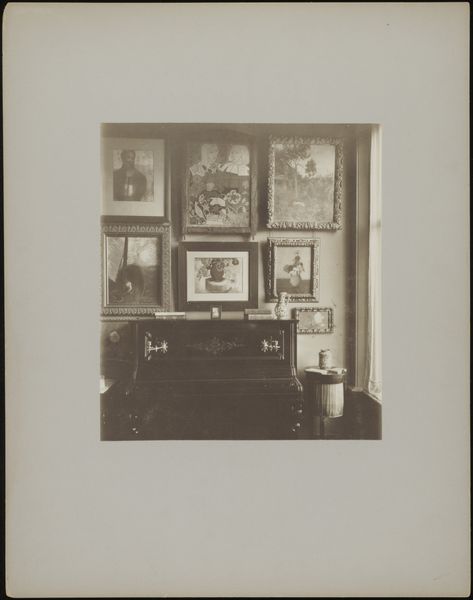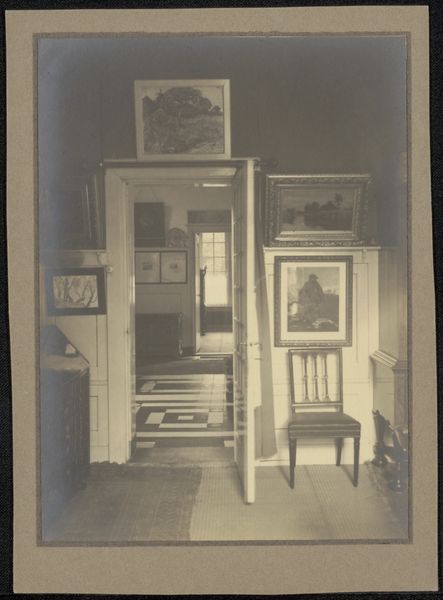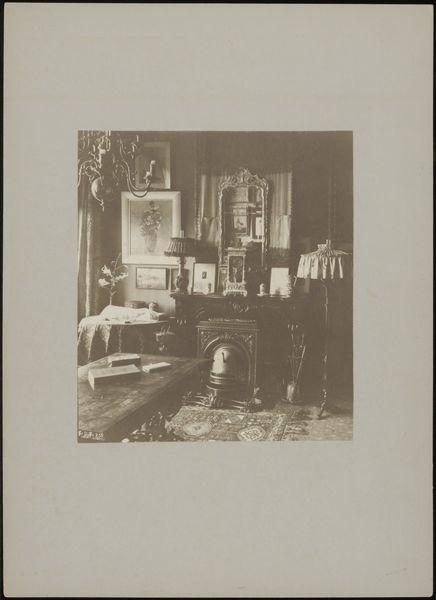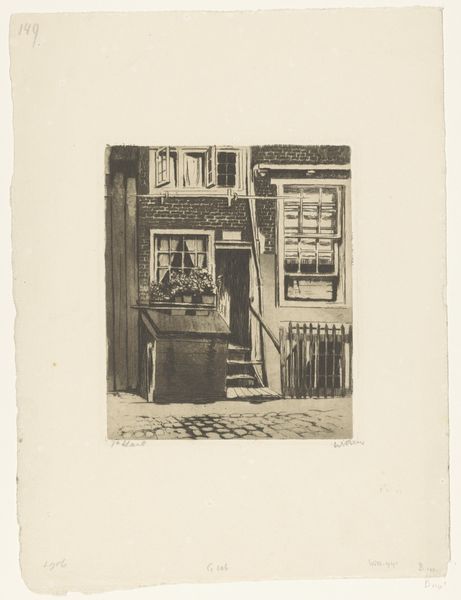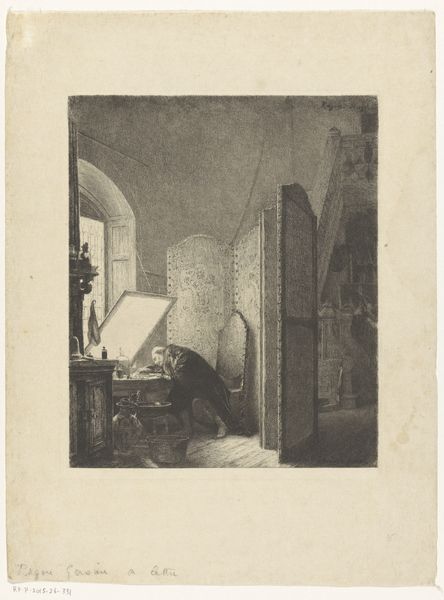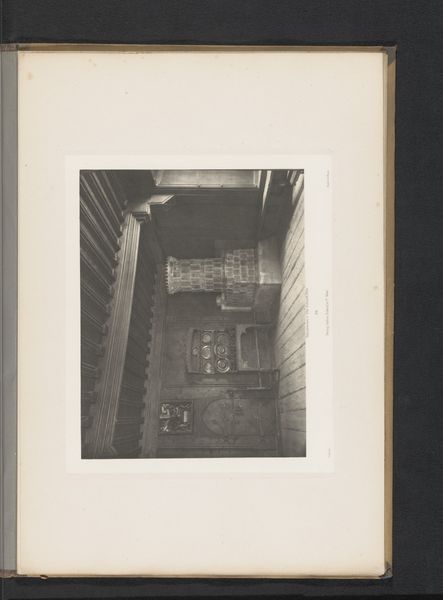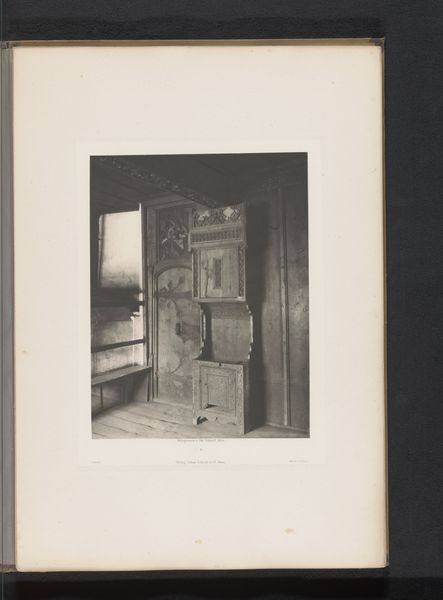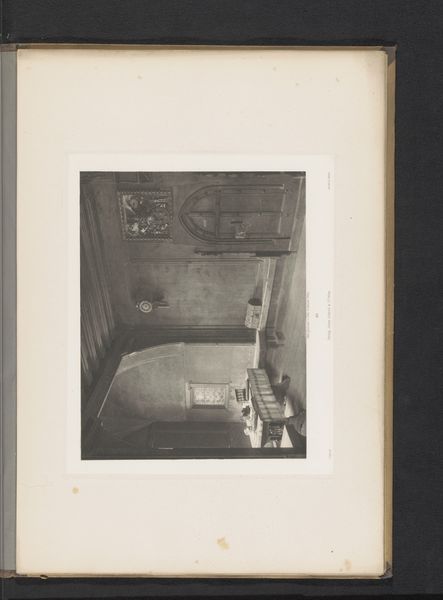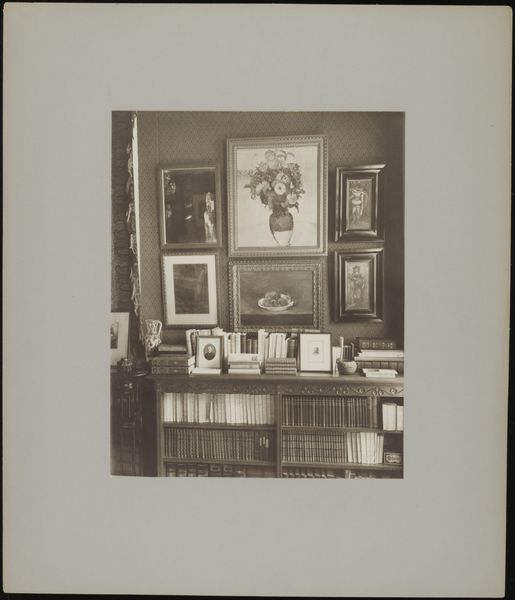
Dimensions: overall: 15.6 x 11.2 cm (6 1/8 x 4 7/16 in.)
Copyright: National Gallery of Art: CC0 1.0
Editor: This is Alphonse Le Blondel's "Décor d'atelier, nature morte," a daguerreotype from around 1855. It feels like a peek into a 19th-century artist’s studio. It's incredibly detailed. What draws your attention in this photograph? Curator: I'm struck by the raw materiality. Look at how Le Blondel uses the daguerreotype process to capture the *stuff* of art-making: plaster casts, paintings, tools. Notice the clear connection between the production of art and its context of display; the studio isn't just a backdrop but an integral part of the artwork. What does this image tell us about the labor involved in creating art at this time? Editor: That’s interesting. I hadn't considered the labor. I was mostly focused on the aesthetic arrangement. So, are you saying that the items presented—the tools and sketches alongside the final products—are of equal importance? Curator: Absolutely! The presence of the daguerreotype medium itself, with its specific chemical and technical demands, forces us to consider the process. It challenges this conventional separation of ‘high’ art, represented by the statue, versus craft or labor indicated by other humble materials found in the studio. Don't you think? How might the act of photographing the studio itself become a form of artistic labor, worthy of equal standing as more traditional fine art? Editor: I do, now! It emphasizes how much skill and hard work went into art-making back then, not just innate talent. Thank you! It opens a door to see art, really see it, in new ways. Curator: My pleasure!
Comments
No comments
Be the first to comment and join the conversation on the ultimate creative platform.
